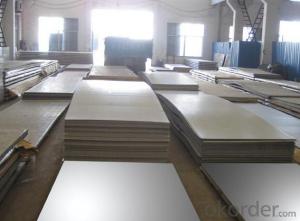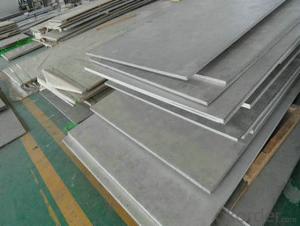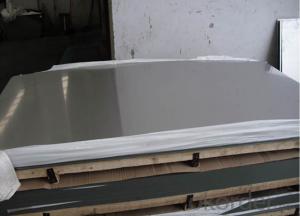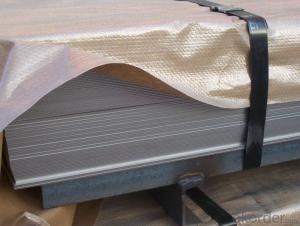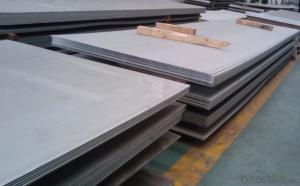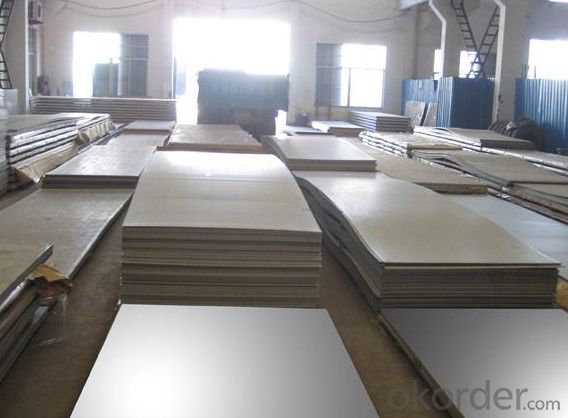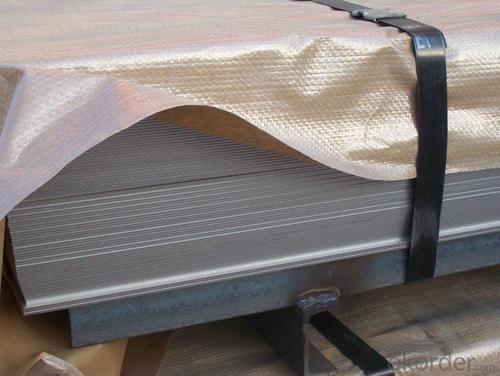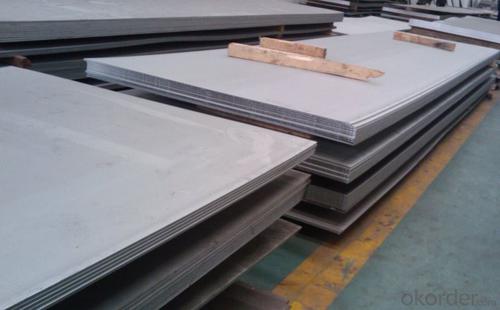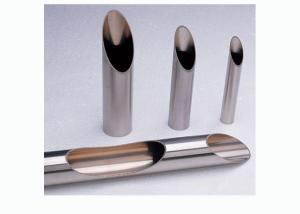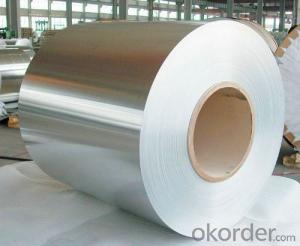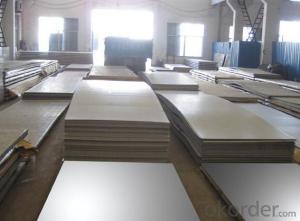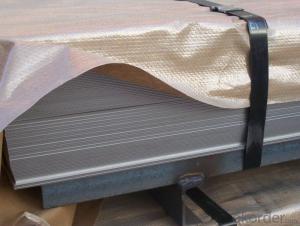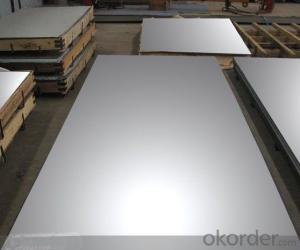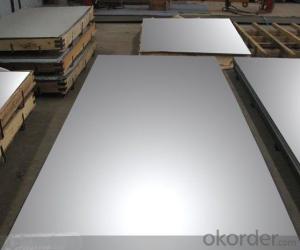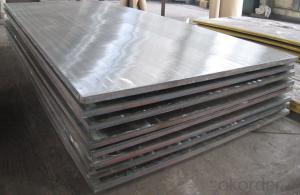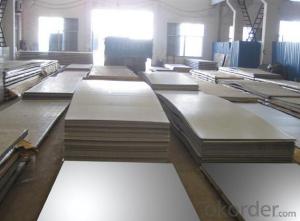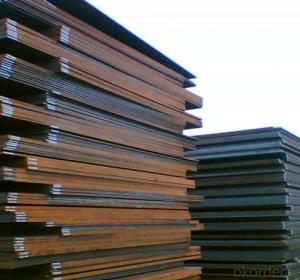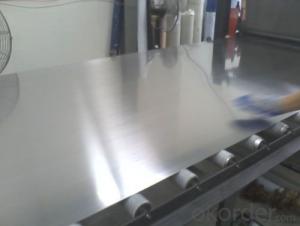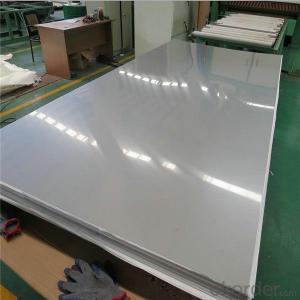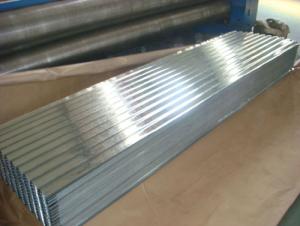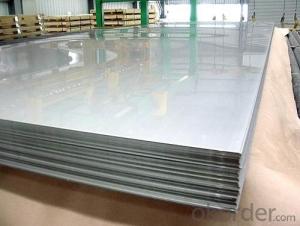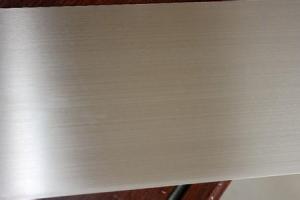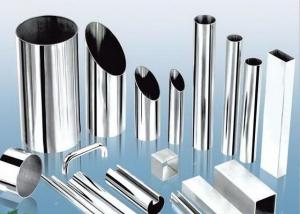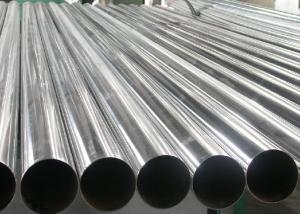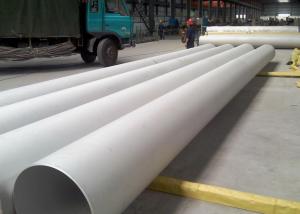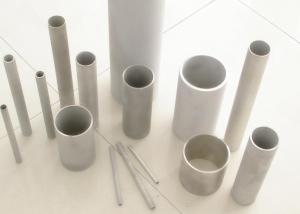Stainless Steel sheet with Great Quality
- Loading Port:
- Shanghai
- Payment Terms:
- TT OR LC
- Min Order Qty:
- 10000 m.t.
- Supply Capability:
- 5000000 m.t./month
OKorder Service Pledge
OKorder Financial Service
You Might Also Like
Hot sale stainless steel sheet 201/202/304/304l/316/316l/430 in china alibaba
Description of Stainless Steel Sheet:
Description | steel sheet,hot rolled steel sheet,cold rolled steel sheet, steel sheet,sheet,steel plate |
Standard | ASME, ASTM, EN ,BS,GB,DIN, JIS etc |
Application | Steel sheet applies to construction field, ships building industry, petroleum & chemical industries, war and electricity industries, food processing and medical industry, boiler heat exchanger, machinery and hardware fields. |
Packaging | Standard export sea-worthy packing |
Delivery time | 10-30 days |
Quality | No.1 |
Productivity | 500 tons/Day |
Note | Our company has cooperative relation between the domestic agents. Stainless steel sheet can be made accordingto the customers requirements. Fasten delivery. Quality assured. |
Contacts | If you have any question,please feel free contact me. |
Stainless steel sheet surface finish characteristics
Surface finish | Characteristics and application |
2B | The surface brightness and flatness of no2B is better than no2D. then through a special surface treatment to improve its mechanical properties,No2B could nearly satisfy comprehensive uses. |
No.1 | Polished with abrasive belt of grit#100-#200, have better brightness with discontinuous coarse stria, used as inner and external ornaments for building, electrical appliances and kitchen utensils etc. |
No.4 | Polished with abrasive belt of grit #150-#180,have better brightness with discontinuous coarse stria, but thinner than No3, are used as bathtub buildings inner and external ornaments electrical appliances kitchen utensils and food processing equipment etc. |
HL | Polished with abrasive belt of grit #150-#320 on the NO.4 finish and has continuous streaks, mainly used as buildings ornaments elevators, door of building, frontal plate etc. |
BA | Cold rolled, bright annealed and skin-passed, the product have excellent brightness and good reflexivity like mirror, kitchen apparatus, ornament etc. |
8K | The product have excellent brightness and prefer reflexivity can to be the mirror. |
Main Features of stainless steel sheet :
•Escalator, Elevator, Doors
•Furniture
•Production tools, Kitchen appliances, freezers, cold rooms
•Auto Parts
•Machinery and Packaging
•Equipment and Medical devices
•Transport system
Product Details:
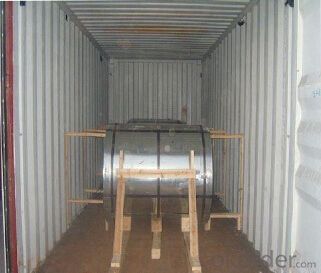
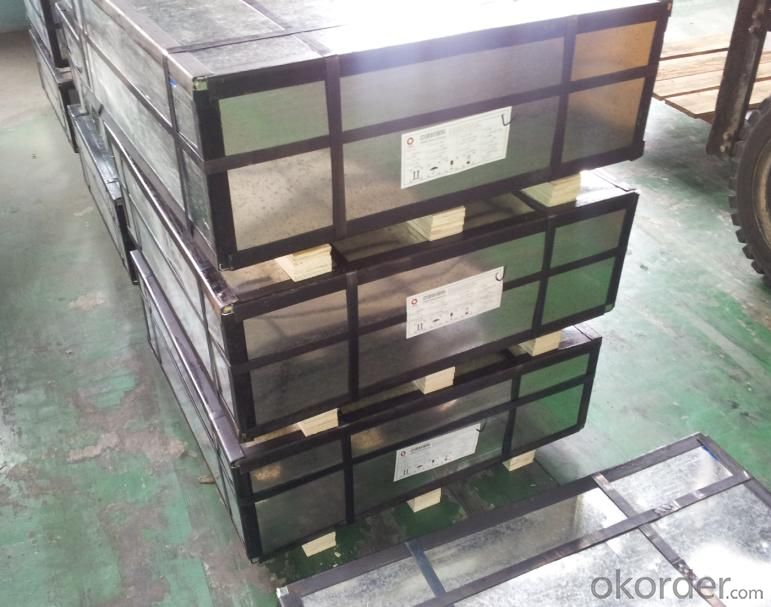
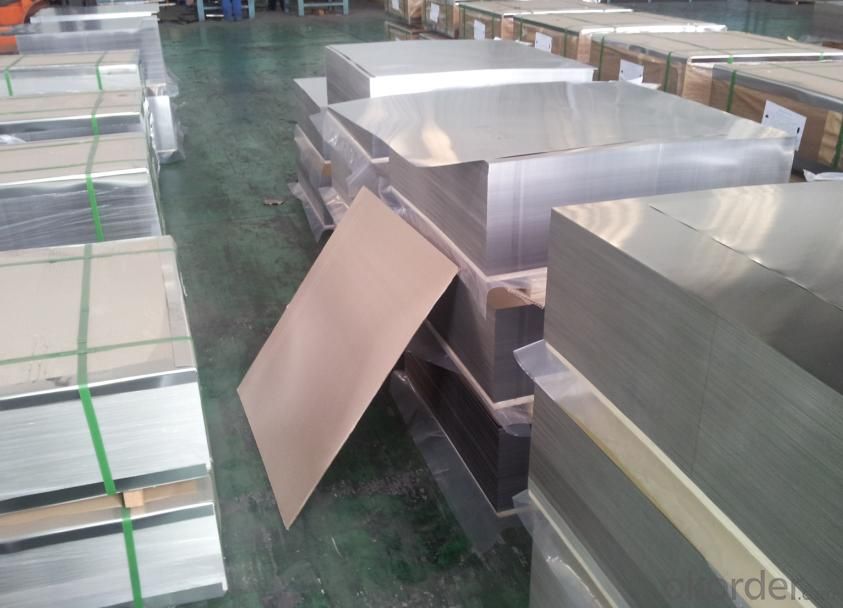
Sandard Seaworth Packing(wooden packing with water proof paper)
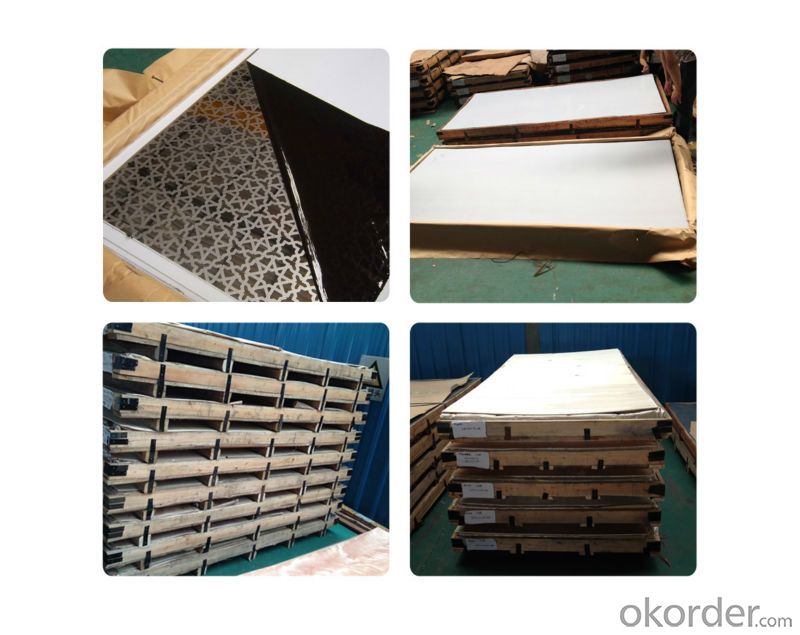
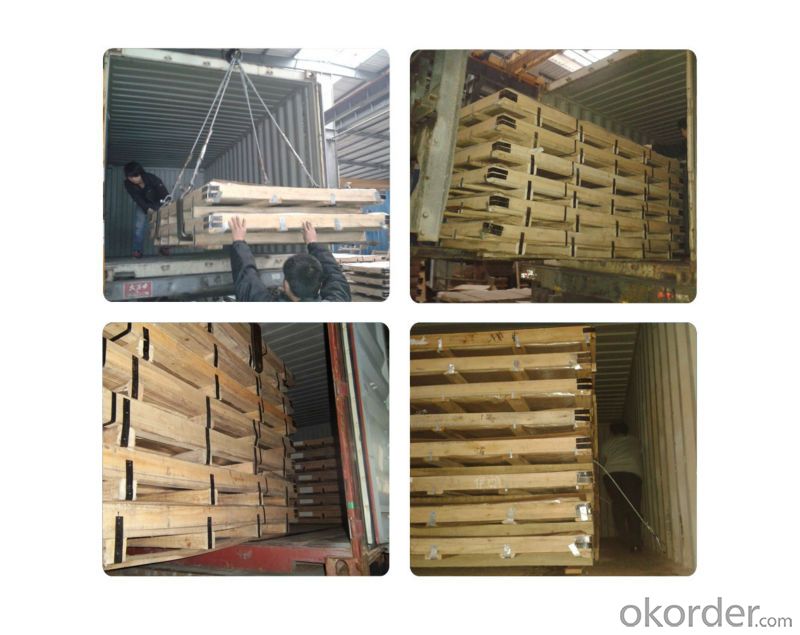
FAQ:
1. What's the quality?
very fine
2. How long get reply?
within 24 hours
If you have any question about stainless steel sheets,donot forget to sending the email to Us! You will get the competitive Price and have a very good experience about the Buying Process! CNBM International Corporation is always your trustful friend!
- Q: Can stainless steel sheets be used in the construction industry?
- Yes, stainless steel sheets can be used in the construction industry. They are commonly used for a variety of applications including roofing, cladding, structural supports, and interior finishes. Stainless steel offers excellent corrosion resistance, durability, and aesthetic appeal, making it a popular choice for construction projects.
- Q: Can stainless steel sheets be used for electrical applications?
- Yes, stainless steel sheets can be used for electrical applications. Stainless steel is an alloy that contains chromium, which makes it highly resistant to corrosion and oxidation. This corrosion resistance is beneficial for electrical applications where the material may be exposed to moisture or harsh environments. Stainless steel sheets can be used in various electrical components such as electrical enclosures, control panels, junction boxes, and electrical connectors. The high strength and durability of stainless steel make it suitable for these applications, providing a reliable and long-lasting solution. Additionally, stainless steel's non-magnetic properties can be advantageous in certain electrical applications where magnetic interference needs to be minimized.
- Q: How do you remove fingerprints from stainless steel sheets?
- To remove fingerprints from stainless steel sheets, there are a few effective methods you can try: 1. Soap and water: Start by wiping the surface with a soft cloth or sponge soaked in warm soapy water. Gently rub the affected area in circular motions. Rinse the cloth or sponge and wipe away any soap residue. Dry the stainless steel sheet with a clean, lint-free cloth. 2. Vinegar solution: Mix equal parts of white vinegar and water in a spray bottle. Spray the solution directly onto the fingerprints and let it sit for a few minutes. Wipe the surface with a soft cloth in a circular motion, ensuring to follow the grain of the stainless steel. Rinse the cloth and wipe away any remaining vinegar. Dry the sheet thoroughly. 3. Glass cleaner: Spray a small amount of glass cleaner onto a soft cloth and gently rub the fingerprints. Again, wipe in circular motions, following the grain of the stainless steel. Repeat if necessary, rinsing the cloth and reapplying cleaner as needed. Finally, dry the surface with a clean cloth. 4. Stainless steel cleaner: There are various commercial stainless steel cleaners available that can effectively remove fingerprints. Follow the instructions provided on the product and apply it to the affected areas. Wipe the surface with a soft cloth, following the grain of the stainless steel, and buff it to a shine. Make sure to read and follow any safety precautions mentioned on the product. Regardless of the method you choose, always remember to test it on a small, inconspicuous area first to ensure it doesn't damage or discolor the stainless steel sheet. Additionally, avoid using abrasive cleaners or scrub brushes, as they can scratch the surface. With proper care and regular cleaning, you can keep your stainless steel sheets looking shiny and fingerprint-free.
- Q: 304 stainless steel has several advantages, a few big advantages, the more concrete the better
- 304 stainless steel is a universal stainless steel material, antirust performance than the 200 series of stainless steel material stronger. High temperature resistance is also good, the general use of temperature limit is less than 650 degrees centigrade.
- Q: What is the elongation percentage of stainless steel sheets?
- The elongation percentage of stainless steel sheets can vary depending on the grade and thickness of the sheets, but typically ranges from 40% to 60%.
- Q: What are the different types of stainless steel sheet finishes for automotive applications?
- Some of the different types of stainless steel sheet finishes for automotive applications include brushed, polished, satin, mirror, and textured finishes. These finishes vary in terms of appearance, texture, and level of reflectivity, providing options for various aesthetic preferences and functional requirements in the automotive industry.
- Q: Can stainless steel sheets be used for pharmaceutical storage cabinets?
- Yes, stainless steel sheets can be used for pharmaceutical storage cabinets. Stainless steel is a preferred material in the pharmaceutical industry due to its hygiene, durability, and resistance to corrosion, making it suitable for storing pharmaceutical products safely and maintaining their quality.
- Q: What is the maximum width of stainless steel sheets available?
- The supplier and customer requirements can cause variations in the maximum width of stainless steel sheets. Typically, these sheets come in widths ranging from 36 inches (91.44 cm) to 72 inches (182.88 cm). However, certain specialty suppliers may have wider options, exceeding 96 inches (243.84 cm) or even more. It is crucial to consider that wider sheets might incur higher production expenses and longer delivery times. Therefore, customers should consult their supplier to ascertain the maximum width suitable for their particular demands.
- Q: What is the water resistance of stainless steel sheets?
- The water resistance of stainless steel sheets is typically high due to their nonporous nature and corrosion-resistant properties.
- Q: Can stainless steel sheets be polished?
- Yes, stainless steel sheets can be polished. Polishing stainless steel sheets helps in removing scratches, stains, and improving the overall appearance of the metal surface.
Send your message to us
Stainless Steel sheet with Great Quality
- Loading Port:
- Shanghai
- Payment Terms:
- TT OR LC
- Min Order Qty:
- 10000 m.t.
- Supply Capability:
- 5000000 m.t./month
OKorder Service Pledge
OKorder Financial Service
Similar products
Hot products
Hot Searches
Related keywords
